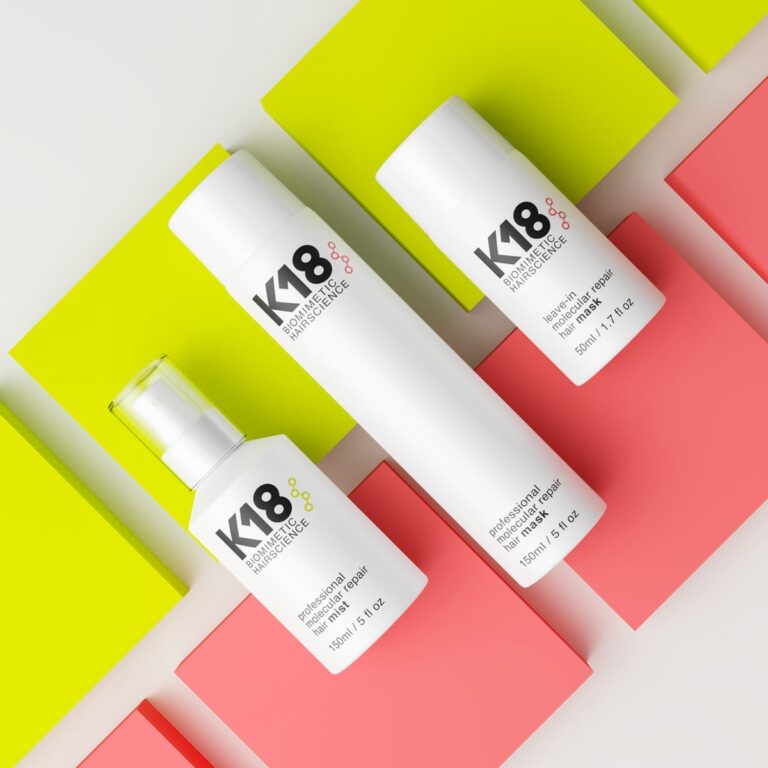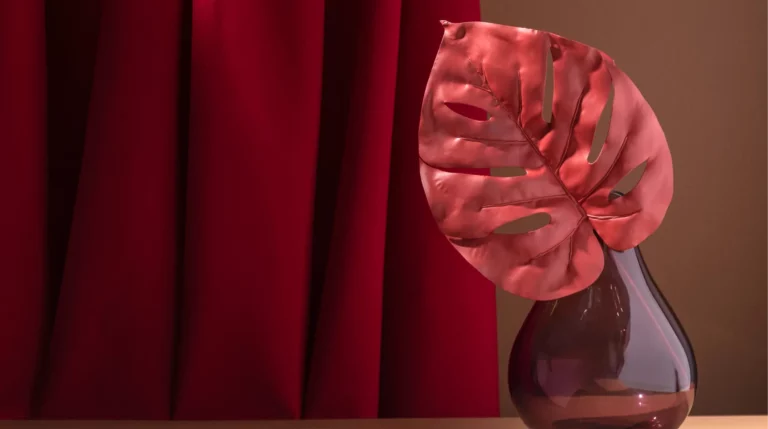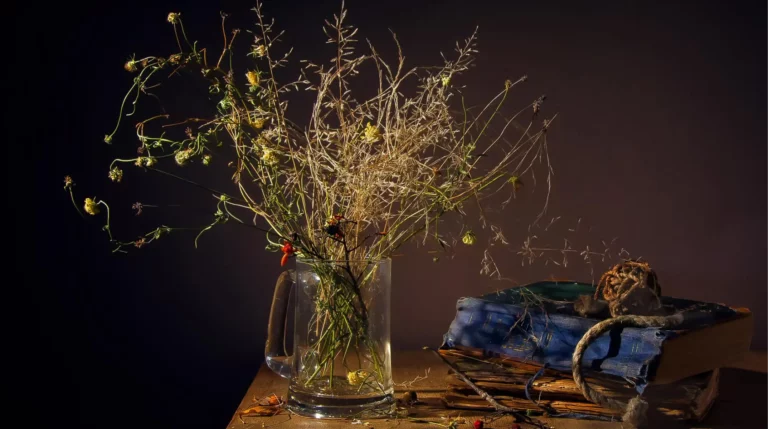Today we will discuss some of the most common mistakes I encounter during my still life photography, and how you can avoid them. Let’s start with the last few weeks, when I started photographing a series of hero images for a cosmetics brand.
Throughout this project, I have used a variety of different styles, settings, and subjects for still life photography. The online community and those who follow my work have reached out to me for advice, critiques, and comments on their work. I realize that most of my tutorials and behind-the-scenes videos have given viewers some ideas and insights into setting up and shooting still life. So, I decided to highlight the most common problems I have seen and give my recommendations on how to solve them.
We can divide them into two categories, composition and lighting. The first category, composition, is about contrast in the composition of the final image. This seems to be a common and recurring problem in the photographs I have examined.
As a very basic example, in the video, I have taken a stick and drawn circles waves in the sand. In the middle lays a perfectly geometrical object. This creates a contrast in the two items. I highly encourage you to work with different shapes and sizes to find a perfect pair. Even different colors can have a huge difference in the result.
Types of still life photography
The world of still life photography has plenty of nuances, and it is evolving with each passing day. You can place most of the still life photography works in two main categories: created or found. Of course, there are deeper ramifications (that we’ll discuss shortly), as this is only a general overview.
Created still life photography refers to a human-created environment that resembles a real life setting. On the contrary, found still life creations are captured naturally, without any involvement from the photographer on the scene. Which one should you choose? – it’s up to you, really. Some people enjoy having full control over the smallest details in their works, while others enjoy the simplicity that found still life photography offers.
With that out of the way, let’s take a deeper dive together into the world of still life artwork – who knows, maybe you’ll find your style in there.
Hard surface product photography

The definition of hard surface product photography is quite straightforward, as it applies to products with a reflective surface or packaging. Perfumes, watches, cosmetics, or jewelry, there is a plethora of products that can be added into this bracket. This type of photography requires a great deal of attention to detail, lighting, and composition to ensure that the final image accurately represents the product and highlights its unique characteristics.
One of the greatest challenges in hard surface product photography is dealing with reflections. Glossy surfaces reflect light in unpredictable ways, resulting in distorted or overexposed images if not handled properly. An experienced photographer uses a variety of lighting techniques and carefully positions the product to minimize reflections while capturing the gloss and texture of the product. Check out our latest article to find out how we use camera settings effectively to capture your product in the best light possible.
Traditional studio product photography
Traditional studio product photography is a technique in which images of products are taken against an unobtrusive background in a controlled lighting environment. This type of still photography has been around for decades and is still widely used today because it allows for an accurate representation of the product.
The key to successful traditional studio product photography is attention to details such as lighting, composition and post-processing. Professional photographers use specialized equipment such as light boxes, diffusers, and reflectors to achieve the perfect shot. It’s important to experiment with different angles and perspectives until you find what works best for your product.
E-commerce product photography
E-commerce still life product photography is a branch of product photography that involves photographing products so that they appear in the best possible light for online sales. This type of photography usually takes place in a controlled studio environment where lighting, backdrop, and props are used to create an image that highlights the features and texture of the product.
The goal is to make the product look as attractive as possible while preserving its features. The photographer must have an eye for detail and be able to work with different textures, surfaces, and colors. Lighting also plays a crucial role in ensuring that each image is well lit and visually appealing.
So let us take a look at a cheaper and faster alternative to traditional product photography. Spoiler: This could be the most convenient way to create visual content.
CGI product photography

CGI product photography allows people from around the world to collaborate remotely to create lifelike visual content. Because all the work takes place behind a computer screen, the difficulties associated with traditional ways of working are eliminated. In addition, CGI product photography allows you to better spend your marketing dollars because you only pay for the finished content – no studio or equipment rental, no travel or lodging costs.
If you could do with some extra time and money to invest in other areas of your business, CGI is for you. Learn more on how this breakthrough technology in product photography can elevate your marketing game by clicking here. The following still life photography tips are essential when it comes to e-commerce still-life product photography.
Still life photography tips
Still life photography involves arranging inanimate objects in an aesthetically pleasing and artistic manner. Unlike portrait or landscape photography, still life photography offers the photographer more control over the subject, lighting, and composition. Whether you’re an amateur photographer looking to strengthen your skills or a professional artist looking to explore new areas of expertise, still life photography can be an exciting and rewarding genre to explore, so let’s learn more!
Shot composition

Composition is the key element when it comes to customer retention. The way you place your item, crop your image, and frame your shot has a strong impact on the desired outcome (more engagement, more sales, more website visits, whatever).
In product photography, composition plays a crucial role in grabbing the viewer’s attention and creating an emotional connection with them. Composition can help highlight certain features of a product or convey its intended use.
To learn everything there is about composition and how you can use techniques such as the rule of thirds, leading lines, and symmetry to your advantage, browse through our latest article here.
Keep your images steady
Effective use of a tripod can make all the difference in still life photography. Not only does it provide stability for your camera, but it also allows you to carefully compose your shot without worrying about shaky hands or movement.
Choose a sturdy tripod that can support the weight of your camera and lens. Avoid lightweight tripods as they do not provide enough stability and can easily fall over. Second, adjust the height of the tripod so that it is level with your subject. This will help you achieve a straight horizon line and avoid unnecessary distortion.
Finally, securely attach your camera to the tripod head with a quick release plate or screw mount. Make sure your camera is properly balanced on the tripod head to prevent slipping or tilting during shooting.
Choose the right angles
One effective technique you can use to showcase your product photos is to use angles. The way you position a product in relation to the camera can have a significant impact on how it appears in the photo.
To use angles to your advantage, shoot from a variety of perspectives. Experiment with high and low angles, as well as oblique shots. For example, a shot from a high angle can give the impression of impressiveness, while a shot from a low angle can make a product appear more dominant or imposing. On another hand, oblique shots make the image more interesting by adding depth and dynamics to an otherwise static image.
Find inspiration in other professional work

Still life product photography can be a challenging task, and finding inspiration for your shots is critical to creating compelling visual content. There are a variety of places you can look for inspiration for your still life photography, from online resources to everyday surroundings.
A good place to seek ideas is social media platforms like Instagram and Pinterest. These platforms offer a wealth of creative ideas that you can draw inspiration from. You can search for still life product photography tips to find accounts that specialize in this type of work, or simply browse through hashtags that relate to your industry or niche. In addition, you can also consider joining Facebook groups dedicated to product photography and exchanging ideas with other creatives who share the same passion.
Post-production is a must
With a little editing, you can turn simple product photos into vibrant, eye-catching images that grab attention. When taking high-quality product photos, be sure to use good lighting and pay attention to composition and angles. Once you have captured your images, it’s time to edit them with post-processing software.
When working with editing software, there are some important adjustments you can make to improve the look of your still life photos. Start by adjusting the color balance and saturation until they match your vision for each image. Next, focus on significant details or features that help sell your product. You can also adjust the brightness and contrast levels for added depth and dimensionality. For further information, check out our dedicated article.
Lighting for still life photography
When photographing still life, lighting is one of the most critical factors to consider. The right lighting can make your products look stunning and appealing, while the wrong lighting can make them look dull and uninteresting. So, what is the best lighting for still life photography? Here are some tips to help you get started.
First, natural light is always a viable option for still life product photography. If possible, get your shots near a large window or outside in a shaded area. This will give you plenty of soft, diffused light that will bring out the details of your products without creating harsh shadows or reflections. We also recommend waiting for the golden hour, which is when your product will be at its best.
However, if natural light is not available, you can choose from a variety of other light sources. Artificial light is commonly used in traditional studio still photography to bring out the best features of each subject. From soft boxes to strobe lights, you can mostly pick any type of lighting to get the desired outcome – for more information about the lighting techniques you should use for your product, visit our in-depth article here.
Conclusion
In summary, still life product photography is an essential aspect of modern marketing. With the ever-increasing competition in the marketplace, it is essential to create visually appealing and captivating images that will attract potential customers. Whether you sell your products online or display them in a retail store, still life photography can help you showcase the best features of your products.
To make sure your still life photography shows off well, take a few tips to heart. First, make sure that the lighting is perfect. Lighting plays a crucial role in creating mood and atmosphere in your photos. Moreover, be creative with your image composition. Experiment with different angles and perspectives to highlight the special features of your products. Finally, pay attention to the post-processing stage of your photographs, as editing can transform an average photograph into a stunning masterpiece. Learn more in-depth product photography tips by clicking here.
The key takeaways are: pay more attention to the details in the subject and background and how they pair, and don’t drown out the image with lighting. I look forward to seeing improvements in composition and the use of shadows in your still-life photographs. Keep shooting!
FAQs
What are some tips for finding the perfect composition in still-life photography?
Experiment with different shapes, sizes and colors to find a perfect pair. Pay attention to the details of the subject and background and how they contrast or complement each other.
How can lighting improve still-life photography?
Avoid using a flat light that shines directly on the subject. Instead, try to find a balance between light and shadow. Shadows are just as important as light and can add depth and vibrancy to the image.
What are some common mistakes to avoid in still-life photography?
A common mistake is not paying enough attention to the details of the subject and background. Another is to drown out the image with light or use a flat light source that eliminates all shadows.
How can I improve my still-life photography skills?
Experiment with different compositions, lighting setups, and motifs. Take time to pay attention to the details of the subject and background and how they work together. Practice finding a balance between light and shadow to add depth and interest to your images.



